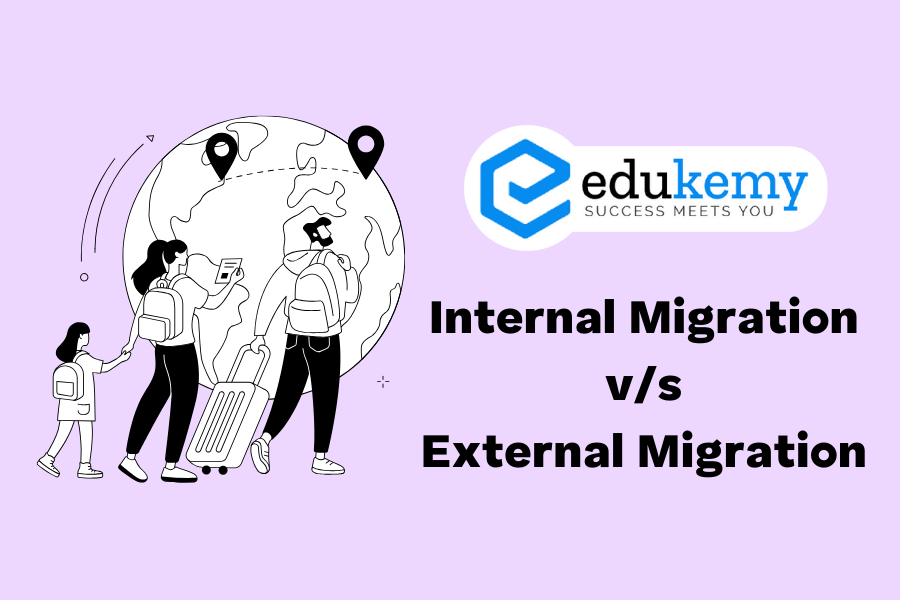
Internal migration and external migration represent two fundamental patterns of human movement that significantly shape the demographic, economic, and social landscapes of societies worldwide. Internal migration refers to the movement of people within the borders of a country, encompassing shifts from rural to urban areas, inter-city relocations, or movements between regions. On the other hand, external migration involves the movement of individuals across international borders, either permanently or temporarily, often driven by factors such as economic opportunities, political instability, or social factors. While both forms of migration share common themes of adaptation and change, they also present distinct challenges and opportunities for migrants and the societies they inhabit. Understanding the dynamics between internal and external migration is crucial for policymakers, researchers, and communities seeking to navigate the complexities of contemporary human mobility.
| Internal Migration | External Migration |
| Internal migration has a crucial impact on how people are spread across different areas. It significantly influences the patterns of human settlements. | External migration is significant in increasing the population of major cities in developed countries, but it doesn’t contribute as much to redistributing populations in less developed nations. |
| An example from the 19th century illustrates this; the movement of people from rural regions to urban industrial centers in Britain was fundamental for the growth of cities and towns, particularly when mortality rates were high in rural areas. | International migration can be likened to international trade as both are mechanisms contributing to globalization. In countries where immigrants settle, they pay taxes and can access certain public services, influencing the overall tax situation for the native population. |
| There is also a longstanding pattern of migration outwards from city cores to the urban peripheries and beyond, driven by new household formation and facilitated by the development of rail and road transport for commuting. | As immigrants gain citizenship, they also gain the right to vote, which can impact domestic politics. In countries from where people emigrate, their departure creates fiscal and political disruptions. |
| This process of suburbanization continues in most countries, although in some cities, central re-urbanisation is occurring. | Indian diaspora is one of the richest minorities in many developed countries, this helped them to lobby for favourable terms regarding India’s interests. For example, at 2.8 million, Indians may number just 1% of the U.S. population, but they are the most educated and richest minority, according to a 2013 Pew survey. |
FAQs
1. What is Internal Migration?
Answer: Internal migration refers to the movement of people within a country’s borders, from one region or locality to another. This movement typically involves individuals or families relocating from rural to urban areas, or between different urban centers within the same country.
2. What is External Migration?
Answer: External migration, also known as international or cross-border migration, involves the movement of people across national boundaries. This type of migration occurs when individuals or families leave their home country to settle in another country for various reasons such as employment opportunities, education, family reunification, or seeking asylum.
3. What are the main drivers of Internal Migration?
Answer: Internal migration is often driven by factors such as economic opportunities, urbanization, changes in employment patterns, better education and healthcare facilities in urban areas, as well as environmental factors like natural disasters or climate change impacts in rural regions. Additionally, social and cultural reasons may also influence internal migration patterns.
4. What are the primary reasons for External Migration?
Answer: External migration is primarily driven by economic, social, political, and environmental factors. Economic opportunities, including better job prospects, higher wages, and improved living standards, often attract individuals to migrate internationally. Other reasons include seeking better education, joining family members already residing in another country, escaping political persecution, conflict, or environmental disasters in their home country.
5. How do Internal and External Migration differ in terms of impact?
Answer: Internal migration affects the distribution of population within a country and can lead to demographic shifts, urbanization, and development challenges such as strain on infrastructure and social services in urban areas. External migration, on the other hand, impacts both the sending and receiving countries economically, socially, and culturally. It can contribute to labor market dynamics, cultural diversity, and remittance flows, while also raising issues related to integration, immigration policies, and social cohesion in host countries.
In case you still have your doubts, contact us on 9811333901.
For UPSC Prelims Resources, Click here
For Daily Updates and Study Material:
Join our Telegram Channel – Edukemy for IAS
- 1. Learn through Videos – here
- 2. Be Exam Ready by Practicing Daily MCQs – here
- 3. Daily Newsletter – Get all your Current Affairs Covered – here
- 4. Mains Answer Writing Practice – here

